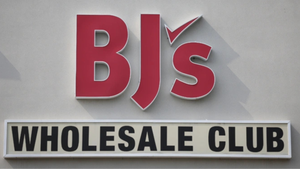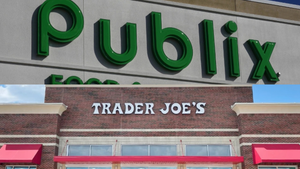Report: Health-conscious food choices too expensive amidst inflationReport: Health-conscious food choices too expensive amidst inflation
Many consumers want to adopt a healthier lifestyle, but prices at the grocery store are too high, according to a recent report.
September 12, 2022

Consumers’ attitudes toward nutrition and dieting trends was explored in a new consumer survey by digital media and promotions company Quotient. The company surveyed 1,000 consumers, and 79% said they are trying to make changes in their diet and eating habits. But escalating prices due to inflation is making healthier lifestyle choices expensive at the grocery store. As a result, CPG brands are not staying in health-conscious shoppers’ carts, said the report.
Matt Krepsik, CEO of Quotient, spoke with WGB recently about how consumers are adjusting amidst inflation and what CPG brands can do to get their products on consumers’ tables.
Jeniece Drake: Why is a healthier lifestyle more expensive?
Matt Krepsik: With the inflation rate hovering around a 40-year high, it is fair to say today’s consumers are finding just about everything to be more expensive. Regardless of your lifestyle, any purchase decision comes down to the question of value. If consumers do not perceive sufficient value, then they are going to shift to a less-expensive alternative or private label. That’s why it’s essential that brands be proactive and deliver value messaging to consumers in order to maintain loyalty and keep their products in carts.
How are consumers adjusting?
In a supply-driven inflationary environment where employment levels remain healthy, we typically see robust demand as consumers absorb the rising prices by making tougher choices on discretionary purchases and reallocating the budgets towards essentials. Over time, this pricing pressure gradually erodes consumers’ purchasing power and they begin to trade off brands for cheaper alternatives and reduce purchasing in select categories.
Are there other options that consumers can explore to adjust?
Modern consumers are adjusting to higher prices by seeking value and savings more than they did previously. That means looking for more ways to stretch buying power, such as cash now, cash back, earning rewards and redeeming promotions. Our internal numbers at Quotient show considerable upticks in consumer savings activity: In Q2 2022, Quotient’s network delivered $2.6 billion to American consumers, which is up 8% over Q1 2022 and up 14% over Q2 2021.
What can CPG brands do to assist consumers?
Brands can reevaluate how they approach their first-party data to develop a complete understanding of loyalty patterns and buying behaviors. The importance of data during an inflationary environment is to quickly identify which consumers are more price sensitive and are potentially pulling back from making the category purchase or trading down to cheaper alternatives. Then brands can adjust their targeted pricing and promotions strategies accordingly.
What effects do you think inflation is having on healthy shoppers now and will have going forward?
We’re already seeing that consumers are savvier in how they shop, discover products, find savings and demand seamless shopping experiences. As their paths to purchase become increasingly nonlinear and digitally integrated, brands going forward must engage consumers at these digital touchpoints where purchase decisions are being made.
Is there anything else you would like to add?
The current supply-driven inflationary cycle is unprecedented for brands and consumers in recent times. While prices are rising due to supply-chain pressures and input costs, overall consumer demand and the job market remain healthy. This results in consumers initially absorbing the pricing increases within their current budgets with a gradual change to their purchase decisions. Brands need to be incredibly diligent in a supply-driven inflationary cycle as once consumers make changes to brand and category choices, the change in behavior tends to be structural and long lasting, making it harder to win consumers back after inflation subsides.
When a supply-driven inflationary cycle ends, it’s not as if consumers were ‘priced out’ of the category or brand and now can afford the brand again. They have chosen to walk away and deprioritized the brand and category, which is a much steeper slippery slope for brands to wait to ‘win back’ consumers.
About the Author
You May Also Like




